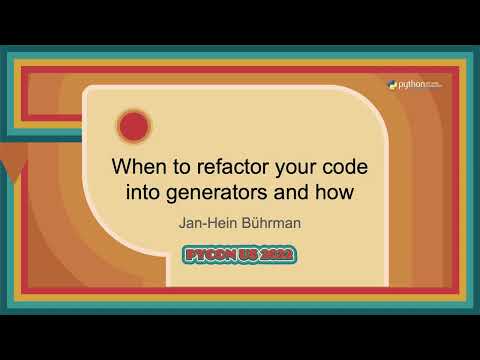Description:
Explore techniques for refactoring code into generators in this 27-minute PyCon US talk by Jan-Hein Bührman. Learn how to identify common loop patterns and transform them into more maintainable and Pythonic code using generator functions. Discover how to combine custom generators with standard library tools and third-party packages to create efficient code pipelines. Follow along with a practical example using the Fibonacci sequence to understand the before-and-after effects of generator-based refactoring. Gain insights into recognizing opportunities for this refactoring pattern and improving code maintainability. Access accompanying slides for visual reference and additional details on the concepts presented.

When to Refactor Your Code into Generators and How
Add to list